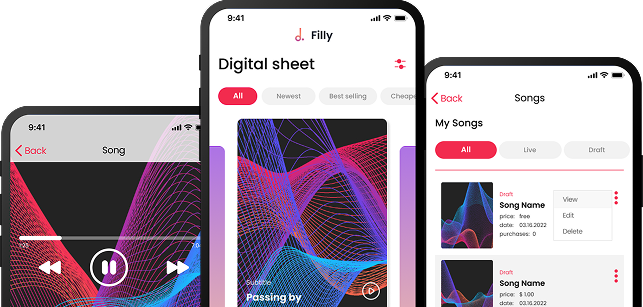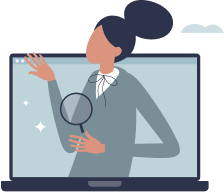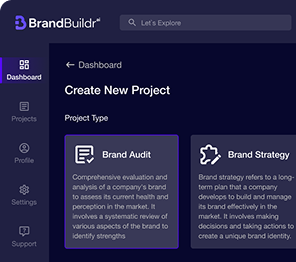In today's fast-paced business environment, companies often need software solutions tailored specifically to their unique workflows, processes, and customer needs. Custom software development provides businesses with the flexibility to design applications that address these specific requirements, enabling them to improve efficiency, reduce costs, and stay ahead of the competition.
This article provides a comprehensive step-by-step guide to successful custom software development, covering everything from initial planning to deployment and maintenance.

1. Understanding Custom Software Development
Before diving into the steps of custom software development, it’s essential to understand what sets it apart from off-the-shelf solutions. Custom software is built specifically to meet the needs of an organization or a specific user group. Unlike generic software, which offers general features for a broad range of users, custom software focuses on solving the unique challenges of a particular business.
Benefits of Custom Software Development:
- Tailored Solutions: Custom software fits perfectly with your business processes, eliminating unnecessary features and focusing on what matters.
- Scalability: The software can grow alongside your business, adapting to new needs or challenges as they arise.
- Integration: Custom software integrates seamlessly with existing systems, ensuring smooth workflow and data flow.
- Competitive Advantage: Since it is designed specifically for your business, it provides a unique advantage over competitors using generic software.
2. Step 1: Defining Your Business Requirements
The first and most crucial step in the custom software development process is to define your business requirements. Without a clear understanding of what you need the software to accomplish, the development process will lack direction, and the final product may fall short of your expectations.
Key Activities:
- Identify the Problem: What business problem are you trying to solve with custom software? Identify bottlenecks in your current processes, or new features you need to add.
- Define User Roles: Who will be using the software? Define the key stakeholders, whether internal (employees) or external (customers), and understand their needs.
- Set Objectives: Define specific goals for the software, such as improving efficiency, reducing manual work, or enhancing customer experience.
- Establish Metrics: Set measurable outcomes that will help you gauge the success of the software post-launch (e.g., time savings, cost reductions, user satisfaction).
Outcome:
A requirements document or project scope that outlines all of the functional and non-functional requirements, user stories, and desired features of the software.
3. Step 2: Selecting the Right Technology Stack
Choosing the right technology stack is a critical decision that affects the performance, scalability, and future maintenance of your software. The technology stack includes the programming languages, frameworks, databases, and tools used to build your application.
Considerations When Choosing a Technology Stack:
- Business Requirements: Does the technology support the features you need? For instance, a real-time application may require specific technologies like Node.js for fast, event-driven communication.
- Scalability Needs: Will the technology allow the software to grow as your business expands? Scalability should be considered from the start.
- Team Expertise: Does your development team have experience with the chosen technology stack? Adopting new technologies may slow down development or increase costs.
- Maintenance and Support: How easy is it to find support for the technology? Popular technologies like Python, Java, and React have large communities and robust support ecosystems.
Popular Technology Stacks:
- Frontend: React.js, Angular, Vue.js
- Backend: Node.js, Django (Python), Ruby on Rails, ASP.NET
- Databases: PostgreSQL, MySQL, MongoDB
- Cloud Platforms: AWS, Microsoft Azure, Google Cloud
Outcome:
A technology stack decision that aligns with your business goals and development needs.


4. Step 3: Planning and Design
Once the requirements and technology stack are established, the next step is to create a detailed project plan and design for the software. This phase helps ensure that the development team is aligned with the project objectives and can work efficiently.
Key Activities:
- Project Timeline: Break down the development process into phases, creating a detailed timeline that includes design, development, testing, and deployment milestones.
- Wireframes and Mockups: Create low-fidelity wireframes and high-fidelity mockups of the user interface (UI). This helps visualize the app’s design and flow.
- UX Design: User experience (UX) design ensures that the software is intuitive and easy to use. Focus on creating workflows that prioritize the user’s needs.
- Architectural Design: Plan out the software architecture, including how different components will interact, the data flow, and how the system will handle user requests.
Outcome:
A blueprint for development, including UI/UX designs and a clear project timeline that developers and stakeholders can follow.
5. Step 4: Development
The development phase is where the actual coding begins. This stage can be broken down into two parts: frontend and backend development. Depending on the size of the project, these parts can be developed concurrently.
Frontend Development:
The frontend is what users interact with directly. Developers will write code to bring the UI/UX designs to life, ensuring that the interface is responsive, accessible, and consistent across devices.
Backend Development:
The backend is the server-side logic that powers the software. Backend developers will set up databases, servers, and APIs that allow the frontend to communicate with the system and store or retrieve data.
Best Practices:
- Agile Development: Use an agile methodology to break the project into smaller sprints. This allows for regular reviews and iterative improvements.
- Version Control: Ensure the development team uses version control tools like Git to track changes, collaborate, and avoid losing work.
- Testing in Parallel: Conduct unit tests and integration tests throughout the development process to ensure that individual components work correctly and can interact with one another.
Outcome:
A functional MVP (Minimum Viable Product) or completed version of the software that meets the requirements outlined in the project scope.

6. Step 5: Testing and Quality Assurance
Before the software can be launched, it must undergo thorough testing and quality assurance (QA) to ensure it functions correctly, is secure, and meets the required performance standards.
Types of Testing:
- Unit Testing: Tests individual components or units of the software for functionality.
- Integration Testing: Ensures that different modules and components of the software work together as expected.
- Performance Testing: Measures the software’s response time, scalability, and stability under various conditions.
- Security Testing: Ensures that the software is secure and that any potential vulnerabilities are identified and fixed.
- User Acceptance Testing (UAT): Involves key users testing the software to ensure that it meets their needs and works as expected in real-world scenarios.
Best Practices:
- Automated Testing: Use automated testing tools like Selenium or JUnit to speed up the testing process and ensure consistency.
- Bug Tracking: Utilize bug tracking tools like Jira or Trello to document issues and track their resolution.
Outcome:
A thoroughly tested software product that is free from critical bugs and ready for deployment.
7. Step 6: Deployment and Launch
Once the software has passed all the necessary tests, it’s time to deploy it in a production environment. This involves setting up the servers, configuring the databases, and ensuring that the software is accessible to its intended users.
Key Activities:
- Production Setup: Configure the production environment, including the server, database, and cloud infrastructure.
- Data Migration: If necessary, migrate data from existing systems to the new custom software.
- Monitoring: Set up monitoring tools to track the performance and stability of the software after launch.
Post-Launch Activities:
- User Training: Provide training or documentation to ensure users can effectively use the new software.
- Marketing and Communication: Announce the software launch to your user base or employees and provide support channels for feedback.
Outcome:
A successful deployment of the custom software in the live environment, making it accessible to end users.
8. Step 7: Ongoing Maintenance and Support
Software development doesn’t end after deployment. Regular maintenance is necessary to fix bugs, address security vulnerabilities, and ensure the software continues functioning as intended. Additionally, you may need to add new features or scale the software as your business grows.
Types of Maintenance:
- Corrective Maintenance: Fix bugs or errors that were missed during testing.
- Adaptive Maintenance: Update the software to ensure compatibility with new hardware, operating systems, or third-party services.
- Perfective Maintenance: Add new features or improve existing ones to meet changing business needs.
Best Practices:
- Automated Monitoring: Use tools like New Relic or Datadog to monitor the software’s performance and quickly identify issues.
- Regular Updates: Ensure that security patches and updates are regularly applied to secure the software.
Outcome:
A well-maintained software product that continues to meet your business's and users' needs.
Custom software development isn't just about writing code — it's about crafting a solution that perfectly fits your business, driving efficiency and giving you a competitive edge.
Conclusion
Building a successful custom software solution requires careful planning, collaboration, and ongoing support. By following the steps outlined in this guide—defining your requirements, selecting the right technology stack, creating a solid design, developing, testing, deploying, and maintaining—you can create software that delivers real value to your business.
Custom software development can provide a significant competitive edge, allowing you to optimize workflows, improve customer experience, and scale your business with precision. Whether you are developing software for internal use or for your customers, following these best practices will set you on the path to success.
Heading 1
Heading 2
Heading 3
Heading 4
Heading 5
Heading 6
Lorem ipsum dolor sit amet, consectetur adipiscing elit, sed do eiusmod tempor incididunt ut labore et dolore magna aliqua. Ut enim ad minim veniam, quis nostrud exercitation ullamco laboris nisi ut aliquip ex ea commodo consequat. Duis aute irure dolor in reprehenderit in voluptate velit esse cillum dolore eu fugiat nulla pariatur.
Block quote
Ordered list
- Item 1
- Item 2
- Item 3
Unordered list
- Item A
- Item B
- Item C
Bold text
Emphasis
Superscript
Subscript





















.avif)



.avif)

.avif)


